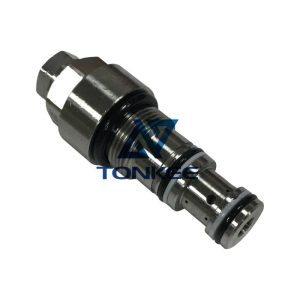
The unloading valve in the PC200-7 and PC200-8 excavators is designed to control the hydraulic pressure during various machine operations.
Its primary function is to divert excess hydraulic fluid back to the hydraulic tank when the system pressure exceeds a predetermined limit. This prevents damage to the hydraulic components and maintains the stability of the system.
One of the critical specifications of the unloading valve is its pressure rating. It is typically designed to handle a specific maximum pressure level, which is usually denoted in pounds per square inch (psi) or bar. The pressure rating of the unloading valve for PC200-7 and PC200-8 excavators is typically in the range of 2500 psi to 3000 psi (170 to 210 bar). This ensures that the valve can handle the high-pressure demands of heavy-duty excavation tasks.
The unloading valve also has a flow rate specification, which determines the amount of hydraulic fluid it can handle per unit of time. The flow rate is typically measured in gallons per minute (gpm) or liters per minute (lpm). For the PC200-7 and PC200-8 models, the unloading valve is designed to accommodate a flow rate of around 30 gpm (113.6 lpm) to 40 gpm (151.4 lpm) depending on the specific configuration and application.
Another important aspect of the unloading valve is its response time.
The response time refers to the time it takes for the valve to react and divert excess fluid when the system pressure exceeds the set limit. In the PC200-7 and PC200-8 excavators, the unloading valve is designed to have a quick response time, typically within milliseconds. This ensures rapid pressure relief and helps maintain the overall system stability and performance.
Additionally, the unloading valve may have features such as pressure adjustment capabilities and pilot control. Pressure adjustment allows the operator or technician to fine-tune the set pressure limit according to the specific requirements of the job. Pilot control refers to the use of pilot pressure to actuate the valve, enabling precise control over the unloading process.
Furthermore, the unloading valve is constructed using durable materials such as high-grade steel or aluminum to withstand the demanding operating conditions and provide long-lasting performance. It undergoes rigorous testing and quality control measures during the manufacturing process to ensure reliability and consistency.



 English
English Русский язык
Русский язык






